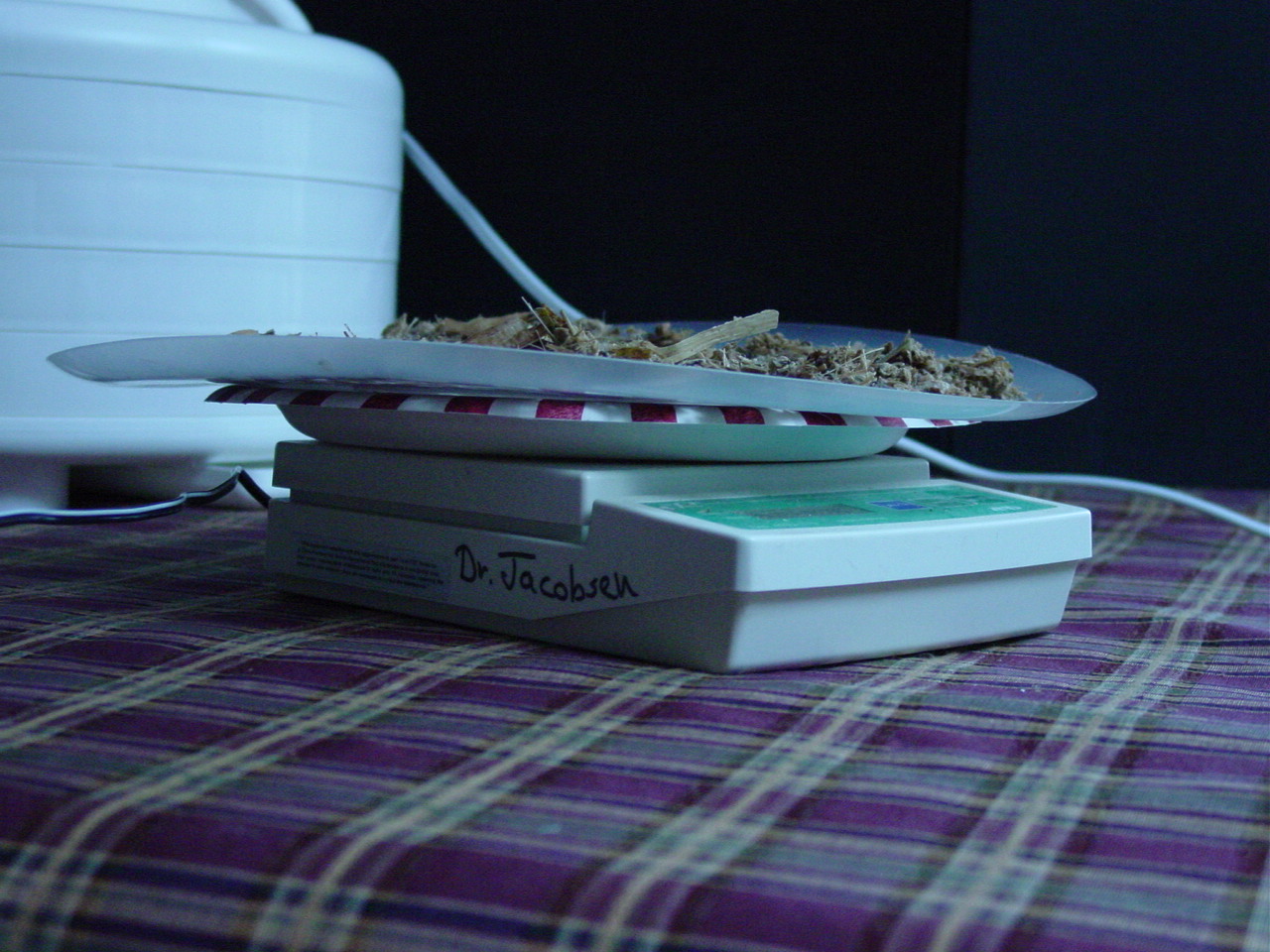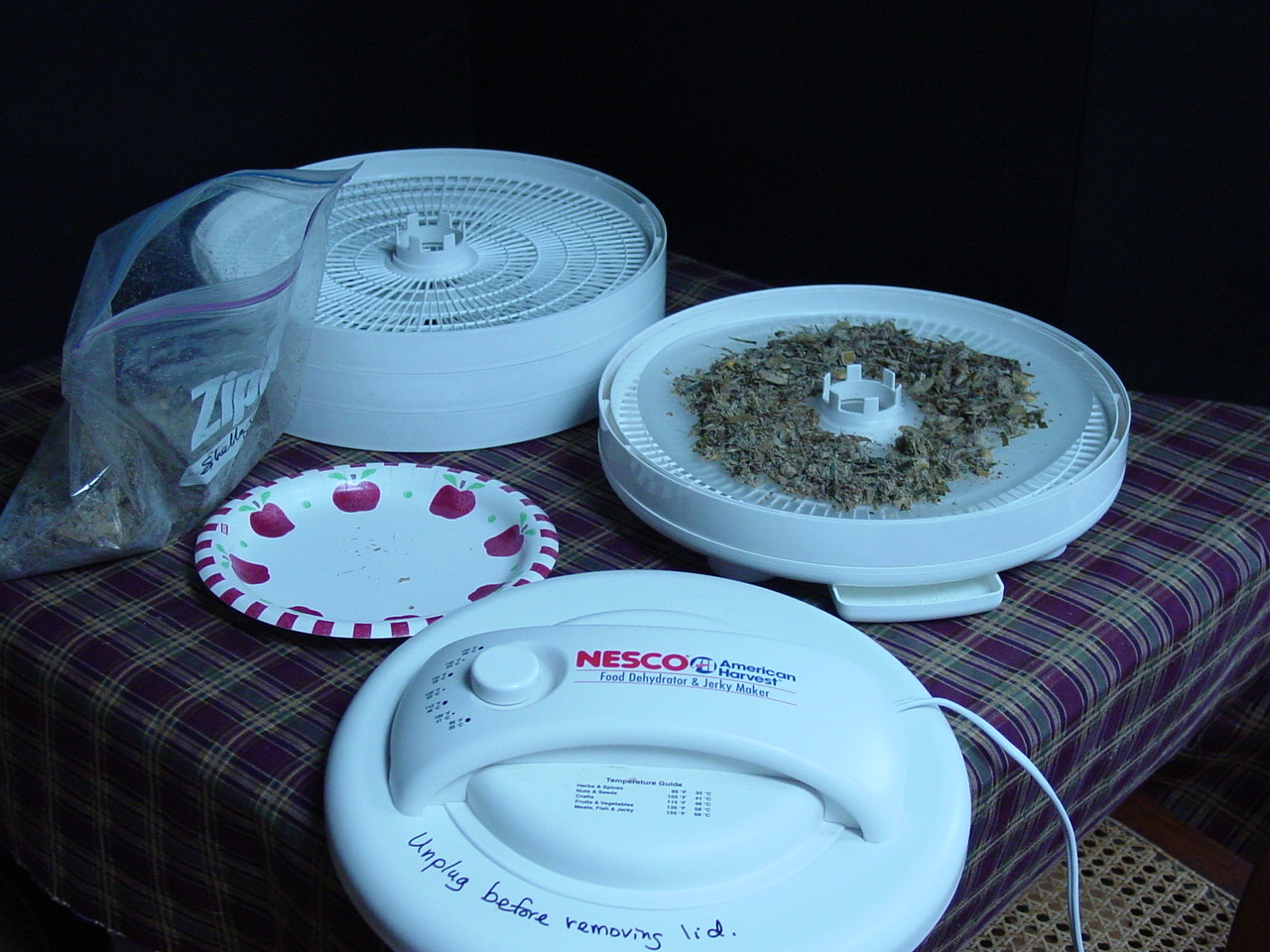

Food Dehydrator Dry Matter Testing
Vortex Hairdryer Dry Matter Testing
Karen Jacobsen Bovine Veterinarian
Global Dairy Consultants & Volunteers
Nicaragua Dairy Feed Analysis, 2011
|
USE OF A FOOD DEHYDRATOR FOR MOISTURE TESTING Karen L. Jacobsen, BS, DVM, MS Procedure for Use of Food Dehydrator for Moisture Testing of Wet Feeds In 1993, I purchased a food dehydrator for my mom for Mother's Day, but the device got side-tracked to my office, where I tried it for silage. Now it is the standard for moisture testing equipment on my clients' dairies. None of my dairymen will ever go back to the traditional cooker system (nor will they go back to a microwave) today. (Needless to say, my mom never got the first dehydrator after I used it to cook silage!) The dehydrator is too easy and convenient to use, because it doesn't require constant attention. Also, 4 or more samples can be cooked at once (various silages, wet brewer's grain, the TMR, etc). One of my 4000-cow dairies uses one on each 1000-cow unit. The managers do it nightly, and adjust dry matters in the morning. When they bag silage, they test ahead. Since they feed approximately 8 feet per day in the bags, they go down the bags ahead of time, mark the bag, and test 4 samples at once. Then they have the dry matter (DM) data for the day ahead of time. The data is pretty remarkable. DM can change from 24% to 40% overnight in a bag if the harvesters switched fields at harvest. We have learned a lot from it - cows milk great on silage at about 30-32%, and don't milk well on 40% DM silage, even when the as fed (AF) is adjusted for the DM (obviously a function of overmature forage in some fields). It's been a great teaching tool for the dairymen this way. The dehydrators cost about $50-75 online for the 500-watt ones. (See below.) -You can buy these directly from Nesco at www.nesco.com or find them on amazon.com, shopping.yahoo.com, or ebay. Be sure to get the extra "fruit roll trays" for drying multiple feeds at the same time (2 or 3 silages, wet brewer's grain, TMR, etc.) - Multi-tray, 500-watt, food dehydrator: NESCO/American Harvestor Snackmaster Express, Model FD-60. This comes with one "beef jerky/fruit roll tray". The tray looks like a flat plastic do-nut. - Scale:. A very accurate one is available from eNasco.com (http://www.enasco.com/product/SB45442M), and costs about $ 80. Accuracy is +/- 0.1 grams. This one includes an A/C adapter, and comes with a handy on-farm carrying case. I no longer recommend cheaper dieter's scales. These cheaper scales are sometimes sold along with particle separators, and are typically only accurate +/- 1.0 grams. This may not seem important, but it is. If you weigh a 100 gm original sample, and the result is 34 gm, then your silage could be 33-35%DM. When you weigh only 50 grams at a time, a silage that you think is 34%DM actually 32-36%DM, and this is very significant when it comes to the As Fed amount of the wet silage. Procedure: PLEASE NOTE: All trade names used in this article are for reference purposes only. Other brand names may serve the purpose equally as well. The author bears no connection financially or otherwise to any company whose product names are mentioned in this article. The author bears no liability for anyone choosing to use these recommendations. Consult your nutritionist or veterinarian for dairy nutritional information on silage and TMR feeding. |
||
 |
|
|
 |
|
|
|
|
||
